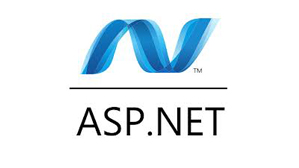Technology
is fast moving, and developers need to keep pace with it in order to
keep their career on track. If a developer is not sharpening up
his/her skills on the latest programming languages and other relevant
technology then he/she is convincingly doing well to keep a full stop
in its career perspective. Reading tech blogs like this one is also
one of the best ways for developers to stay updated with the new
advancing technology. Let's check out the latest technologies in the
market that developers need to learn about:
1. Hadoop -
If you have not yet heard of Hadoop, its surprising you need to wake
up. And if you have heard of it then you must actively learn this. It
is one of the most influencing and market dominating newer
technologies. It’s an open source software that supports
data-intensive distributed applications. Hadoop is harder to
learn and also hard to get the right and sufficient resource for
reference. However, in whatever degree the developer can adequate
himself or herself with this software. Moreover, it can never
impossible to learn anything, with a little bit of effort developers
can definitely master themselves.
2.
MongoDB - This is another ruling technology although it's not as
big as Hadoop but MongoDB has its own importance and it's much
easier to learn. MongoDB is a database that fits well with big AJAX
applications.
3.
Scala - With the changing concurrent programming, there has been a
pragmatic shift in the kind of application developers are asked to
build upon. For instance not long back the trading applications were
demanded on C or C++ buy now demand and preference has shifted to
Java. The newer technology debut in functional object-oriented
programming is of Scala. Scala is not just a language it's in fact a
complete ecosystem of ideas and libraries such as play and Akka.
Staying away from is something that as a developer you can’t
afford at the current market scenario, so better love it and learn
it.
4.
Node. j's - You are a Java developer or a c++ or any other
programming language. But having knowledge of state event-based,
nonblocking systems like Node.js is important. While learning
Node.JS, you may get reasons enough reasons to dislike the language
but once you move ahead you will find plenty reasons that will
interest you about Node.js. Such as the language is supported by a
vibrant community industry support from Microsoft to Cloudbees to
VMware and beyond.
5.
C/C++ or Assembly - Now this is something to which no developer
can give a miss. You may not be using it directly but you will
definitely be glad to have the knowledge of C/C++ or Assembly as
you will be using the language, directly or indirectly on various
platforms. As c and C++ plus is the basic programming language , so
it is always important to be clear with the basics in order to
rightly understand the technology at higher levels. For instance if
you are a Ruby Developer then no one will look for your knowledge of
C++ but any day and anytime you may be asked to fix a problem that
your knowledge of c/c++ can best resolve.
6.
GIT - If you still have no or limited knowledge of Git or don’t
have account in GiftHub, the you are late or slow in the developer
community. Tight your belts and fasten up. GIT is not something to
which you can give a miss. In fact you should have learnt it long
back last year itself. Well it's not late yet as you can straight
away drive to get hands on on GIT, the source code
management (SCM) system.































